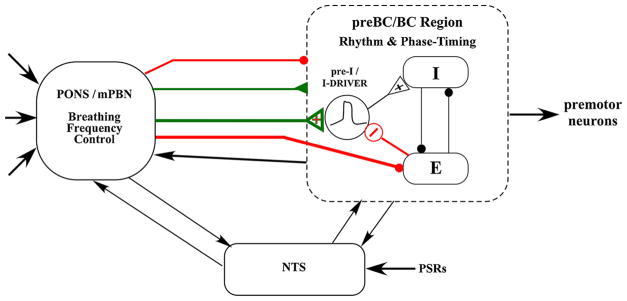Fig. 13.
Diagram of a hypothetical model for terminating the E-phase and advancing the I-phase. The pontine subregion in the medial PB nucleus region (mPBN) sends excitatory inputs (green) to the pre-I as well as other I-neurons to increase pre-I activity and I-phase network excitability to a level that triggers the regenerative properties of the pre-I pacemaker-like neurons and simultaneously strongly inhibits (red) the Bötzinger E-neurons. In addition, Inhibition of the E-neurons results in a possible disinhibition of pre-I neurons (Rybak et al., 2008), which contributes to the increase in pre-I activity and earlier onset of the E-to-I phase switch. These proposed mechanisms shorten the E-phase and switch on the I-phase. The top two inputs (thin lines) indicate general excitatory and inhibitory inputs to the pre-BötC/BötC region. Second order neurons relaying pulmonary stretch receptor activity interact bidirectional with the medullary rhythm/pattern generator and the pontine subregion to control phase timing associated with degree of lung inflation.

